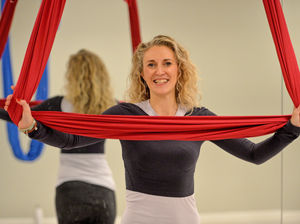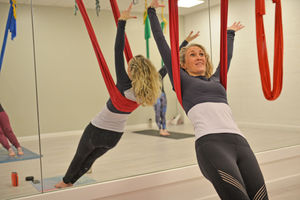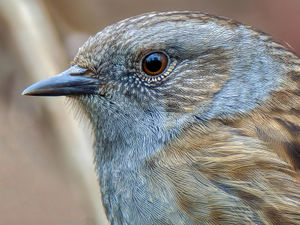Move your body and relax your mind with aerial yoga
Moving your body and relaxing your mind is the ultimate goal of yoga - but not every class requires you to get on a mat.

Aerial yoga where participants use a silk hammock that is suspended from the ceiling as a prop to support them to perform the different poses is becoming increasingly popular.
When Natalie Robertson first tried the practice, she was hooked and now she teaches classes at her studio, Rise Aerial Yoga, in Lichfield.
"I initially discovered aerial yoga in a moment of boredom watching videos on YouTube. It looked like fun, so I found a workshop in Manchester and went to try it out. From that first time in the hammock I decided that I was going to train to teach aerial yoga. The feeling of being in the hammock was incredible and I saw that using that hammock could have so many benefits for people and would be a great class to teach," she tells Weekend.

Mother of two Natalie trained to become a yoga teacher while she was working as a fitness instructor.
"I had practised yoga since my late teens, I wanted to be able to share the feelings that I got from my practice with others.
"The thing I love most is the feeling of being completely in the moment, it’s an escape from everything else that’s going on in the world around you. It’s like the only thing that exists is me, my body and my breath.





